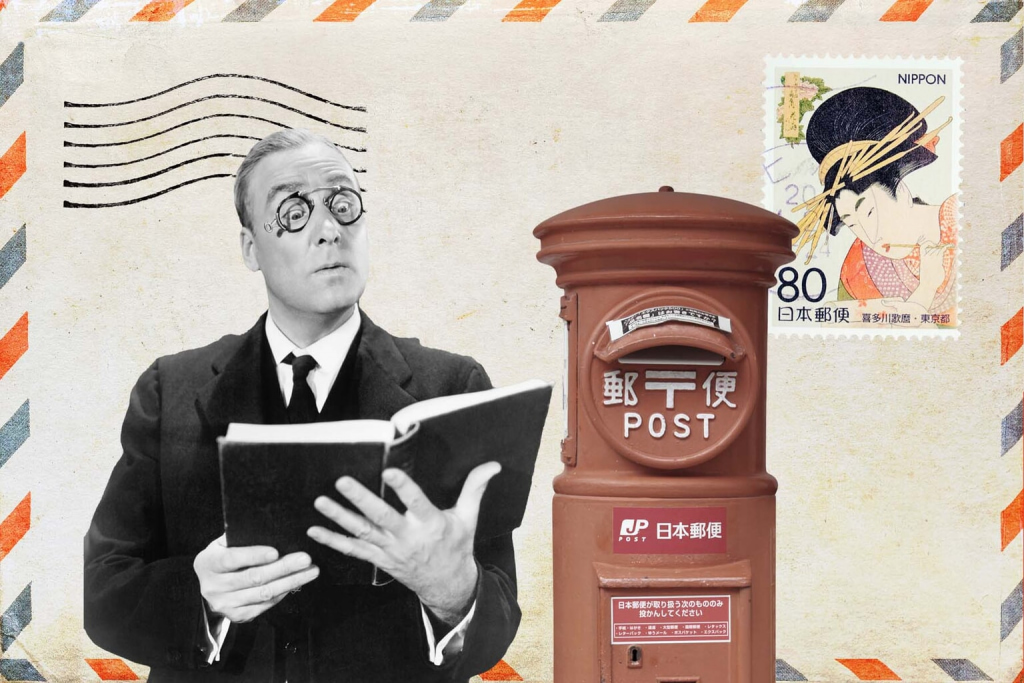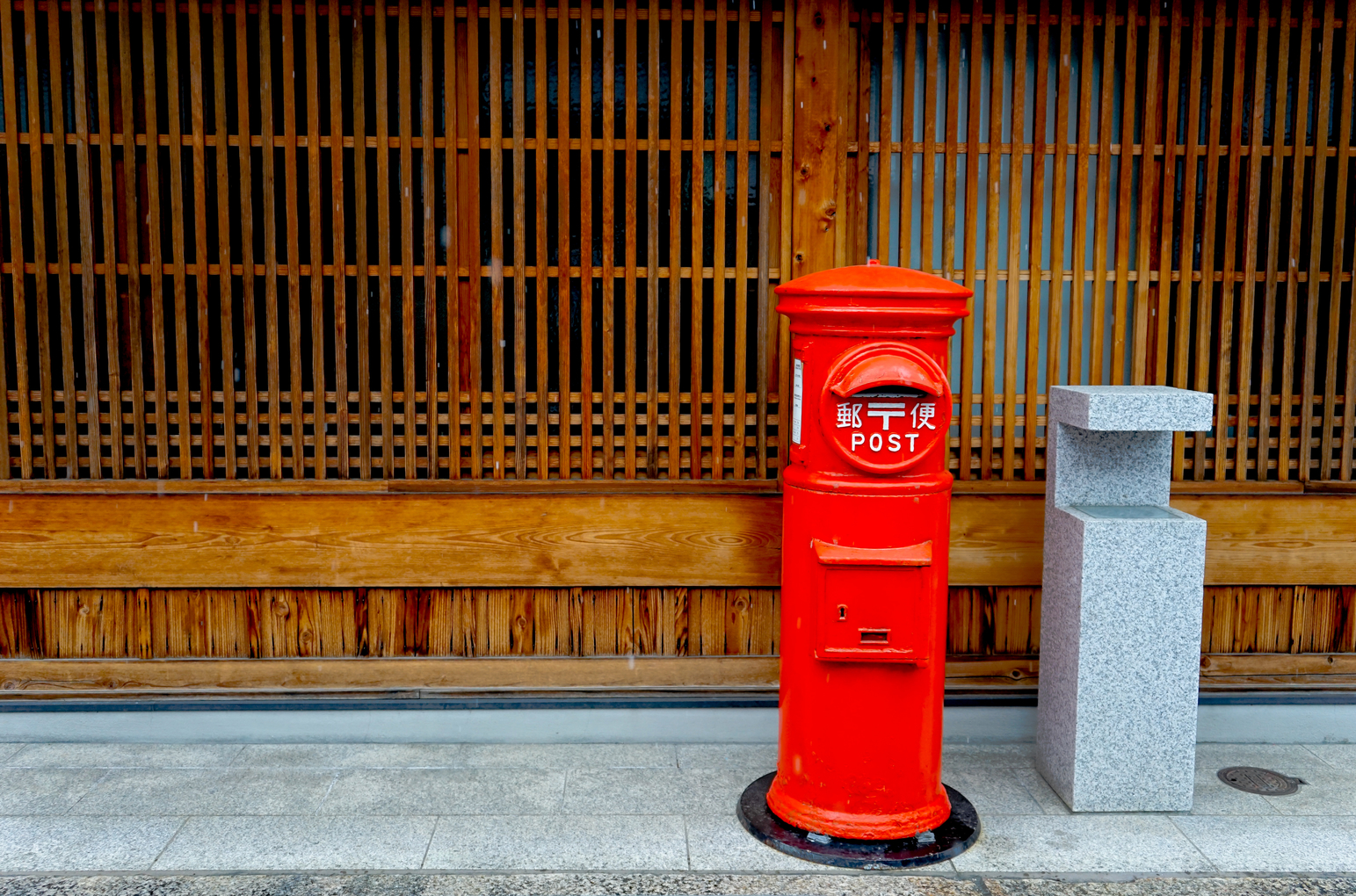Going to the post office in Japan can be a complicated affair. Not only do you have to find one that’s open outside of your working hours, but once you get there, you’re greeted with a ticketing system and a whole load of confusing Japanese to boot.
It’s hard enough navigating through the maze of processes without the extra language barrier, so we’re here to guide you through it all.
What to Expect at a Japanese Post Office
From paying your taxes to sending your luggage to the airport, there’s more on offer than lick-and-stick stamps at Japanese post offices. But sending things is confusing enough, so let’s stick to standard postal services for now.
Arriving at the post office, you’ll see four main things:
- Service counters – If you’re sending a letter or a package, you’ll need a ticket from the ticket machine or line up to be served.
- Card displays – Seasonal postcards and letters for special occasions.
- An island countertop – This will have labels for you to fill out for domestic deliveries.
- ATMs – You can withdraw money from most banks here, but those with a Japan Post bank account can withdraw money for free during certain hours.
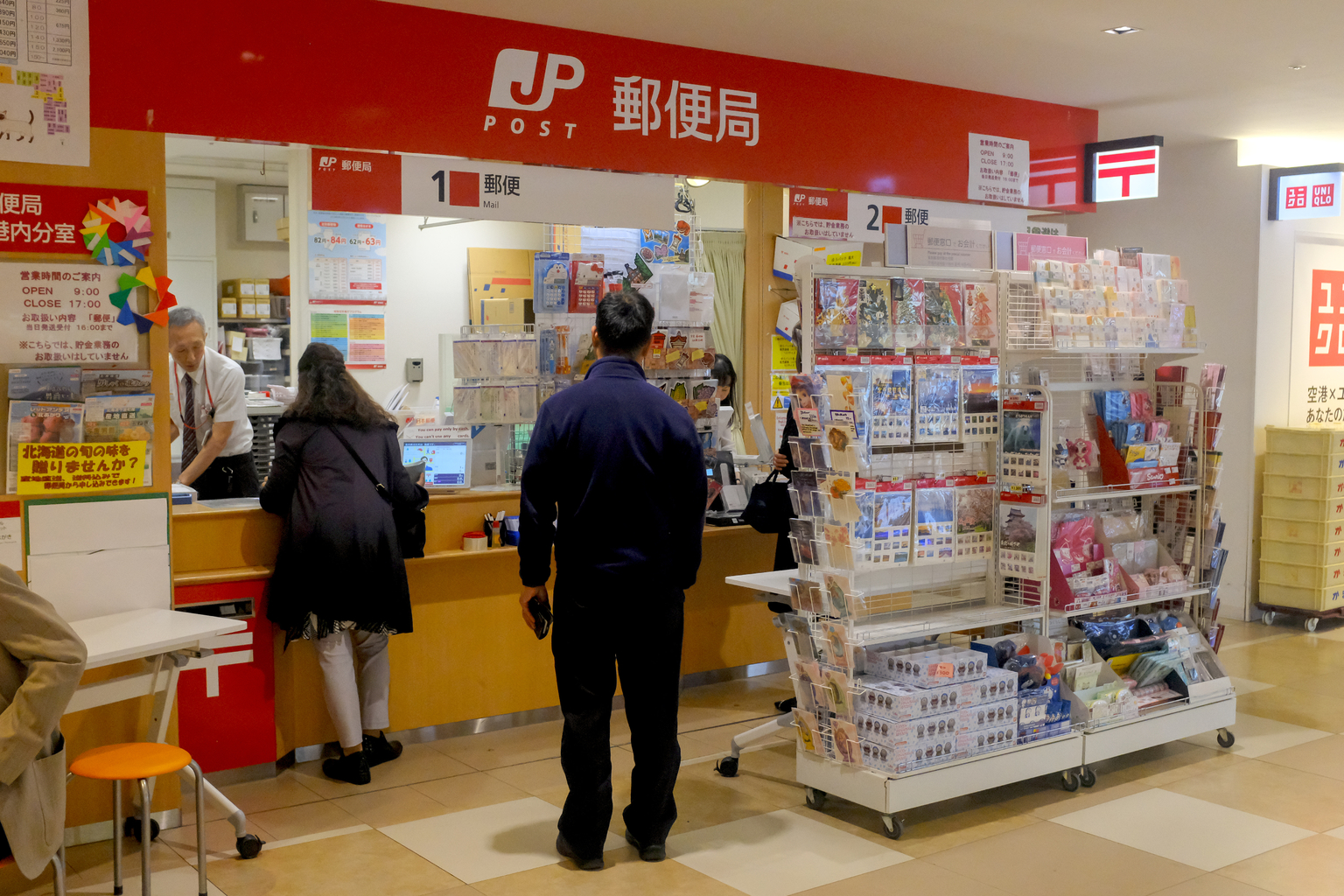
Editorial credit: Terence Toh Chin Eng / Shutterstock.com
If you’re sending a letter or postcard domestically, all you’ll need is a stamp. Take a number or line up, buy a stamp at the counter, and the staff will take care of the rest. Or, buy a pack of regular or special edition stamps to use for yourself.
For domestic parcels, you’ll need to fill out a label. Pick up a blue ゆうパック (yuu pakku) label from the island countertop and fill it in. The pink one is for 着払い (chakubarai), or COD (cash on demand) when the recipient is paying for postage. You can fill in the information in English or Japanese. Bring your parcel and label to the staff counter. They’ll weigh it and may ask you a few more questions (see below), before ringing it up and sending it off.
If you’re sending a package abroad, you’ll need to first create a label for international shipping online. Do this on your computer and print it out at home, or do it on your phone and print it at select post offices. Bring that together with your parcel and the staff will process it.
Types of Letters and Packages
When you’re at the post office, you might need to tell the staff what you are sending to get advice on how to go about it. Here are some basic words to help you along:
- 手紙 tegami – letter
- 葉書 hagaki – postcard
- 書類 shorui – documents
- 小包 kozutsumi – parcel
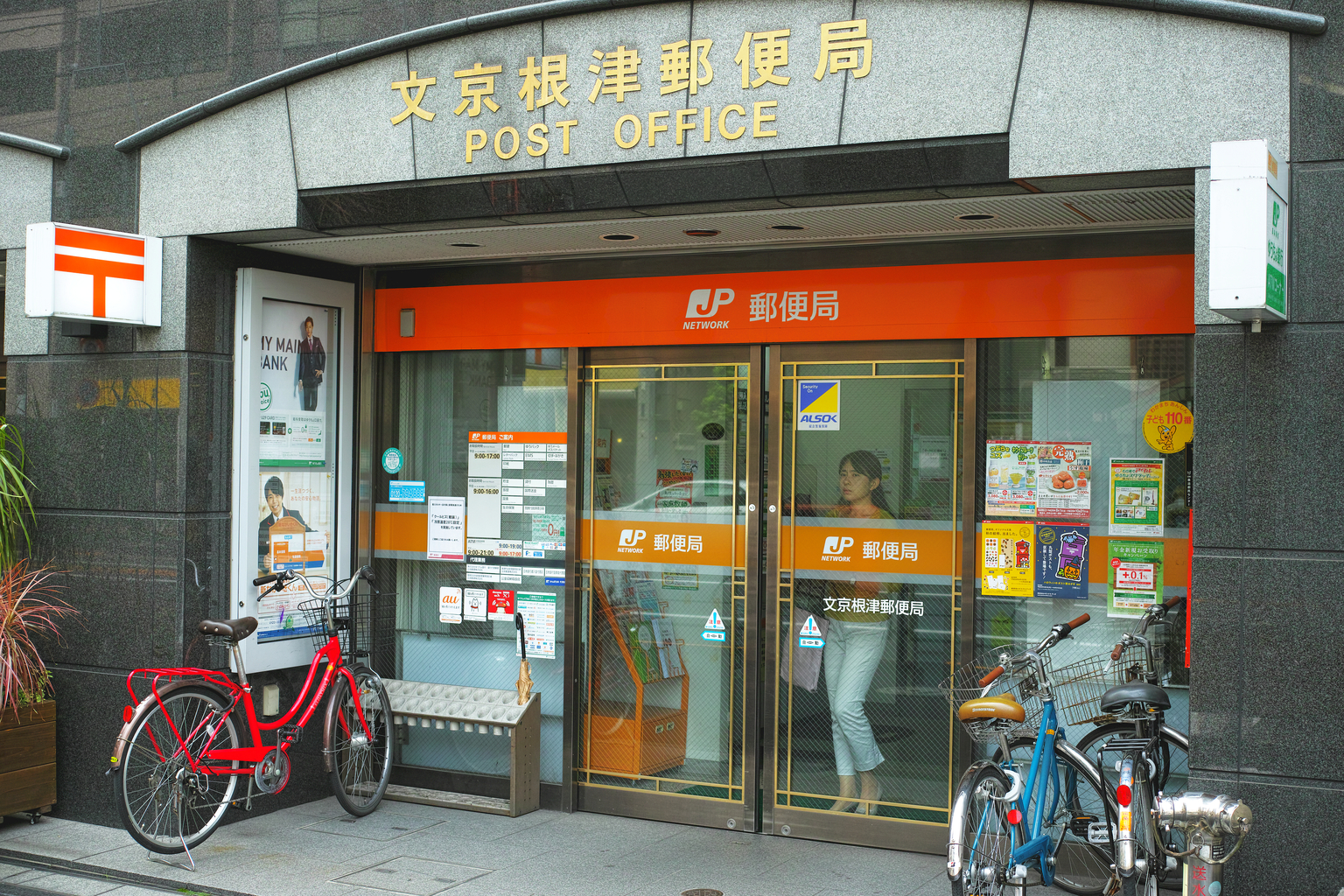
Editorial credit: Takamex / Shutterstock.com
Domestic Delivery Options
For domestic mail, your main packaging options are:
- 封筒 fuutou – envelope, for regular mail
- レターパック letaa pakku – a “letter pack” cardboard envelope for A4 sized items under 4kg. The more expensive red envelope (¥520) guarantees in-person delivery, while the blue (¥370) allows for postbox drop-offs. Both include tracking numbers.
- ゆうパック yuu pakku – Parcel delivery service for items up to 25kg. This has options for specialized items too, such as ski equipment or airport delivery.
Your main domestic delivery options are:
- 普通郵便 futsuu yuubin – Regular mail
- 速達郵便 sokutatsu yuubin – Express delivery
- 書留 kakitome – registered mail
International Delivery Options
International mail services and their options can get a little confusing. There are four main options for international deliveries, varying in speed and price:
- 船便 funabin – surface mail (by ship)
The cheapest and slowest method. A 10kg package to New York costs around 7,000 yen and takes around two months. - SAL便 S.A.L. bin / エコノミー航空 ekonomii koukuu – surface air lifted
The economy air option, where your package gets put on the next flight with room to spare. A 10kg package to New York costs around ¥12,000 and takes around two weeks to arrive. - 航空便 koukuubin – airmail
The standard method. A 10kg package to New York costs around ¥18,000 and takes around five to 10 days for delivery. - 国際スピード郵便 kokusai supiido yuubin – Express Mail Service (EMS) (Sometimes just saying “E.M.S.” will work in Japanese)
The fastest and often the most expensive method, though there are exceptions. A 10kg package to New York costs around ¥23,000 and takes around three days to arrive at its destination
Bonus Words
A few other words you might need along the way:
- 保険 hoken – insurance
- 追跡 tsuiseki – tracking
- 追跡番号 tsuiseki bangou – tracking number
- 配達日 haitatsubi – delivery date
- 切手 kitte – stamp
- 記念切手 kinen kitte – commemorative stamp
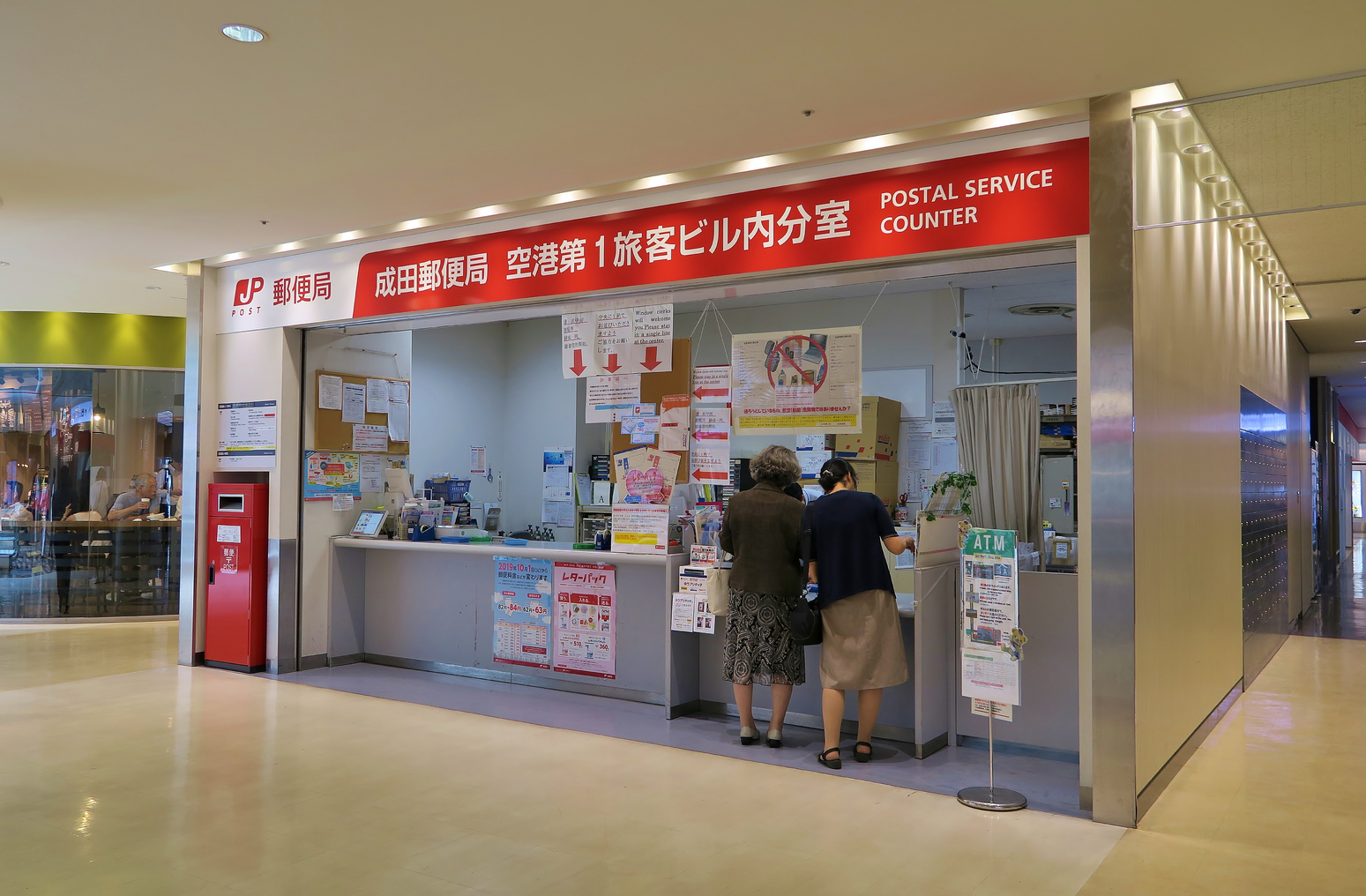
Narita Airport post office
Editorial credit: Picturesque Japan / Shutterstock.com
Useful Japanese Phrases for the Post Office
When you’re finally ready to send your package, you might have some questions, or conversely, the staff might have some questions for you. Here are a few important Japanese phrases to make the process smoother.
中身はなんですか? (Furigana: なかみ は なんですか?)
Nakami wa nan desuka
What’s inside (the parcel)?
配達日のご希望はありますか? (Furigana: はいたつび の きぼう は ありますか?)
Haitatsubi no kibou wa arimasuka?
Do you have a preferred delivery date?
100円の切手を2枚ください。(Furigana: ひゃくえん の きって を にまい ください。)
Hyaku-en no kitte o nimai kudasai.
Two 100-yen stamps, please.
航空便で送るといくらぐらいかかりますか? (Furigana: こうくうびん で おくる と いくら ぐらい かかりますか?)
Koukuubin de okuru to ikura gurai kakarimasuka?
Roughly how much would this cost to send by airmail?
書留にしてください。(Furigana: かきとめ に してください。)
Kakitome ni shite kudasai.
Please send this by registered mail.
*Note that sometimes a force majeure can disrupt the system and some regular postal services might change or not be available.

